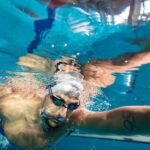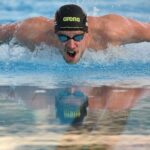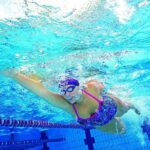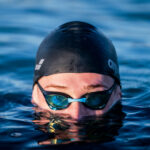Returning to the pool after a long period of inactivity: What you need to know
A few simple rules to follow to better face your reentry into the water.
We decided to go back to the pool after a long period of inactivity and now we are wondering what our new approach will be. Will our physique keep up with the training program that we have in mind and will we be able to acclimate to the new instructors and swimming companions?
The reasons we have strayed from the pool can be infinite, from the most trivial to the most serious, but what matters now is that we are resolute and determined in wanting to start over, maybe even thinking about the physical form and well-being that swimming inevitably gives us.
We begin step by step!
There are many programs to follow but the important thing at the beginning is not to overdo it. You should avoid stressing your muscles too much and aim for small improvements from time to time. In fact, even if you decide to restart a sports activity that can not offer health benefits, you should still observe some valuable indications before diving back into the water.
First, it is important to hydrate our bodies by consuming liquids, eating light meals in view of the workout and most importantly waiting a couple hours after we eat before restarting activity. In addition, before resuming, a sports physical is highly recommended, assessing one’s physical fitness based on the effort required.
4 simple rules to follow!
Here are some simple rules that you should adhere to if you start to swim again after a long period of inactivity:
1. We start with a warm-up phase: it is crucial to avoid excess and prevent accidents such as muscle pain that can lead to cramps while swimming.
2. We maintain a regular rhythm: to stabilize the heart rate that, on average, for a healthy person, even if untrained, should not exceed 120 beats per minute. To monitor your heart rate, you can also equip yourself with a heart rate monitor.
3. We monitor the recovery phase: A couple of minutes after you finish the exercise, your heart rate should return to a regular speed: if it doesn’t, it is good to keep the recovery phase under observation. You can never be too cautious.
4. We swim with regularity and constancy: After a long break, it is very important not to skip even one workout. A few constant sessions is better than a lot of swimming with no regularity. In this way, our bodies will naturally get used to the water again.
Finally, remember that physical activity is still essential in order to keep your body working efficiently given that we are programmed to move and not to spend our days sitting at a desk or lying on the couch. Sports, if practiced in the right way, prolong life, and every moment is a good moment to (re) start.
An opportunity to socialize
Promoting socialization, getting to know new people and overcoming shyness are prerogatives of many sports, swimming in particular. Between lanes, in fact, strong bonds can be created, both with the instructor/trainer and with swimming companions, who will happily inspire us to do better, beat our time and always give something more. The changing room can become a place of familiarity and new friendships.
Even sports performance can greatly improve as a team, and those who usually train alone will notice that they feel less fatigue when training with others. In addition, knowing that someone is waiting for us to tackle a new workout will push us to respect the commitment with greater determination. In short, there are no contraindications in wanting to start swimming again, only benefits.
Are you ready?







